BBQ Anatomy 101
Cooking Grates
Cooking grates are where you place the food on the grill. Cooking grates are commonly made from stainless steel (naturally silver) or cast iron (naturally black). It is important to watch out for rusting and erosion commonly found in cast iron grates, which becomes visible when the black finish begins to fade on the surface. Before and after each use, the cooking grates should be cleaned off which either a paper towel or wireless grill brush.
Flavour bars
Flavour bars, or flavourizer bars, serve the purpose of protecting the burner tubes from grease drippings from food placed on the cooking grates. When damaged or rusted, the flavour bars will not effectively protect the burners which can lead to clogging and performance issues. When flavour bars are not cleaned, grease will pile up which is a common cause of grease fires and flare ups.
Ignitor/starter
The ignitor or starter is used to light the barbecue. It is common for grill owners to have troubles with their ignitor. If changing the battery does not work, you may need to contact a service provider to inspect and repair or purchase a new ignitor kit.
Gas line
The gas line is responsible for feeding the gas from the source through to each burner tube. Most commonly barbecues are powered by natural gas or propane and smaller barbecues use charcoal. If you smell gas at any time, it is important to turn off the barbecue immediately and distance yourself from the grill. After the gas smell is gone, make sure the hose is attached to the source properly and that there are not any holes where gas leaks may be occuring. If the issue persists, contact a licensed gas technician.
Control panel
The control panel is where the gas is turned on to flow through the burners. When each knob is turned, you should here a steady stream of gas flowing through the burners. If possible, turn the knobs prior to igniting the barbecue to ensure gas is flowing properly through the burner tubes for optimal performance. Most knobs can be easily removed from the grill and cleaned off in order to prevent them from getting stuck from grease and grime buildup.
Bottom tray
The bottom tray is the component that catches all the droppings that occur when the grill is in use. It is recommended that the bottom tray be removed and emptied at least once per every 10-15 uses of the barbecue to prevent overflow and reduce the chance of small animals and insects nesting in the barbecue.
Drip pan
The drip pan is typically made of tin and can be removed and replaced easily at any time. It is important to ensure the grease does not accumulate and overflow into the bottom cabinet of the grill. This is a common cause for insects and small animals being attracted inside the barbecue as it provides a safe home with a steady food supply if not maintained properly.
